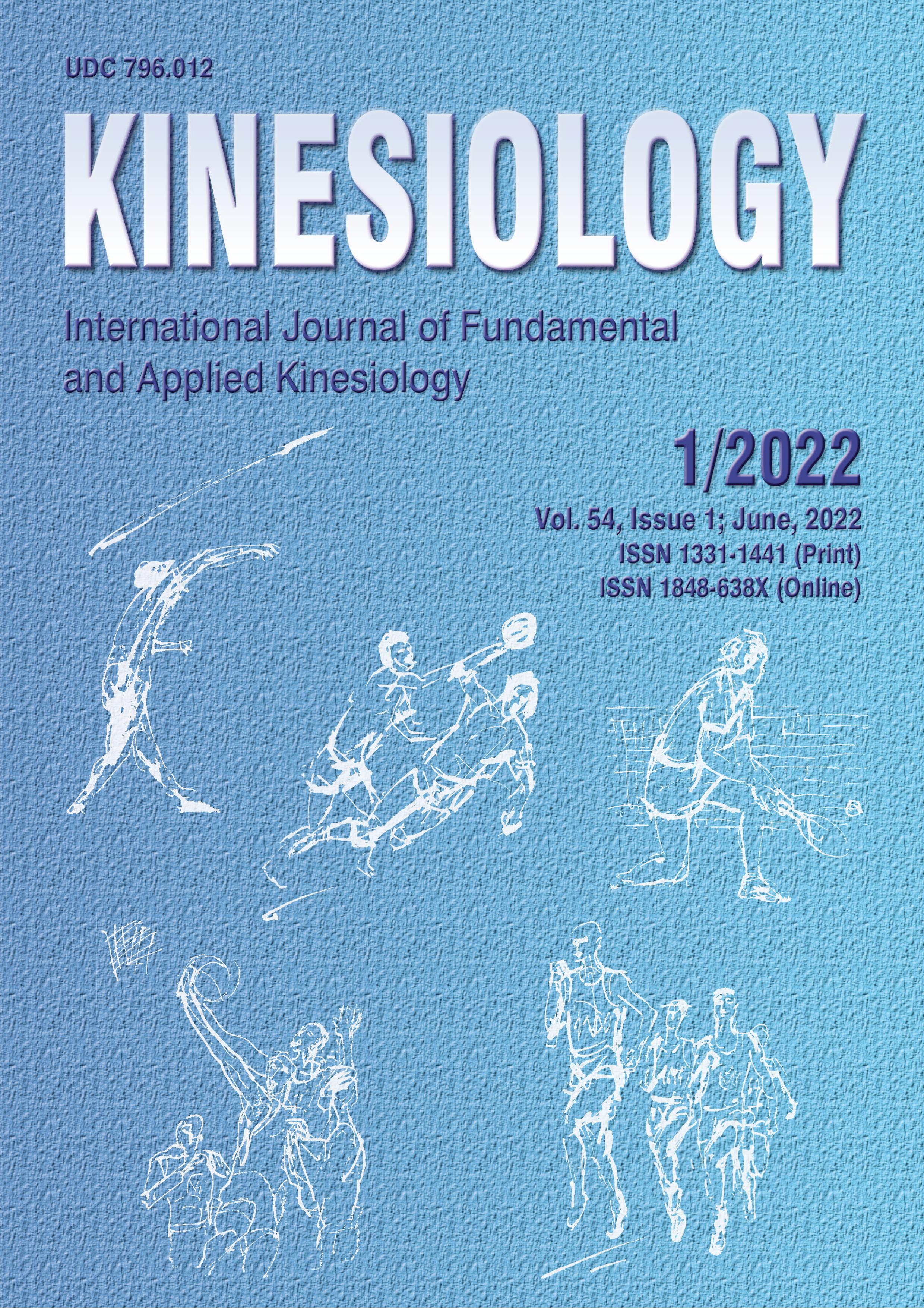WOMEN’S BEACH HANDBALL GAME STATISTICS: DIFFERENCES AND PREDICTIVE POWER FOR WINNING AND LOSING TEAMS
Abstract
The objectives of the present study were: (i) to compare beach handball game-related statistics by match outcome (winning and losing teams), and (ii) to identify characteristics that discriminate performances in the match. The game-related statistics of the 72 women’s matches played in the VIII Women’s Beach Handball World Championship (2018) were analysed. The game-related statistics were taken from the official Web page. A validation of the data showed their reliability to be very good (the inter-observer mean reliability was α=0.82 and the intra-observer mean was α=0.86). For the differences between winning/losing teams a parametric (unpaired t-test) or non-parametric (Mann-Whitney U test) test was applied depending on whether the variable met or did not meet normality, respectively. A stepwise discriminant analysis was then performed to determine the variables that predicted performance (victory or defeat). Five variables showed differences between the winning and losing teams: total points (p<.001; ES=1.09), technical faults (p<.001; ES=‑0.96), the number of players with either negative (p<.001; ES=‑0.86) or positive (p<.001; ES=1.05) valuations and overall valuation (p<.001; ES=1.29). The predictive model correctly classified 80.6% of the matches using two variables (Wilks’s λ=0.618; canonical correlation index=0.618): overall valuation and GK shots.
Keywords: Performance, goal, goalkeeper, shot, block.
Downloads
Published
How to Cite
Issue
Section
License

This work is licensed under a Creative Commons Attribution-NonCommercial 4.0 International License.
At Faculty of Kinesiology we recognize that access to quality research is vital to the scientific community and beyond. Kinesiology is non-profit journal and all costs of publishing and peer review process are covered by the publisher itself or other funding sources like Ministry of Science and Education of the Republic of Croatia. Full text papers are also available free of charge at http://hrcak.srce.hr/kineziologija. There are no restrictions on self archiving of any form of paper (preprint, postprint and publisher's version).
Articles are distributed under the terms of the CC BY - NC 4.0
Kinesiology does not charge any fees to authors to submit or publish articles in our journal.


